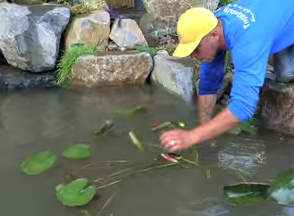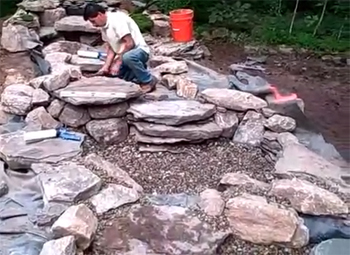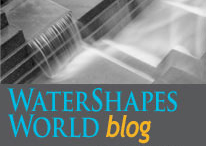finishing touches
It's with mixed emotions that I bring this long series of videos to a conclusion: It's been fun sharing what I know about all of the steps of the pond-installation process with you, and it's been gratifying to get comments from some of you along the way. But all good things must come to an end, and that's what happens with this video. One technical point before I
Of all the innovations related to pond technology, design and installation I’ve encountered in recent years, the most curious one to me has always been the “pondless waterfall.” In an industry where the highest aspiration is always toward achieving truly naturalistic results, having the water reach the bottom and percolate into a bed of stones rather than into a large, attractive pool of water leaves the designer or installer with the challenge of making the project work visually (and emotionally) in what can clearly be perceived as an artificial context. To overcome these perceptions,
About 18 months ago, I began (but after a while moved on from) a series of blogs about specific features and details of watershapes that I like or dislike. Other than my tendency to have a short attention span, I don’t know quite why I stopped writing those articles – and maybe I’ll get back to them someday in a systematic way. For right now, however, recent personal experience makes me write about one particular detail that has bothered me
Pebble Technology (Scottsdale, AZ) has introduced the Finishing Touches pool-tile collection. The three lines have…
Despite our fondest desires, it’s quite inevitable that most of the things we humans design and build are impermanent and will change. That’s particularly true of the greenery we place in and around our gardens and watershapes, simply because plants grow and gradually alter the settings they surround or inhabit. There’s a measure of melancholy in this evolution: As designers and installers of these spaces, we’re left to recognize that in most cases we will never see them at their best and most beautiful. Yet that’s as it should be, because any living work of art will continue to develop and improve long after it is technically “completed” by our hands. There’s also great joy in creating naturalistic watershapes and garden spaces, because I see the art of finishing as an exercise in setting the table for the future. In fact, I see this as being remarkably empowering: By participating in
While discussing his column for this issue, I visited one of David Tisherman's projects and observed one of the most dramatic examples I've ever seen of the


















